SIGGRAPH 2015: Hybrid Craft
Chair(s):
- Amit Zoran
-
- The Hebrew University of Jerusalem
Art Papers Chair(s):
- Victoria Szabo
-
- Duke University
Location:
Los Angeles, California, United States of America
Dates:
August 9th-13th, 2015
Art Show Overview:
Introduction
Human skills are diverse, but many of today’s design and fabrication processes rely on automation rather than manual practice. Modern technology often reduces the need for manual labor, rather than extending it. As a result, traditional crafts are disappearing. The machine has replaced the craftsperson. Plastic has replaced wood. Programmable synthesizers have replaced acoustic instruments. Similarly, traditional design has arrived at an evolutionary impasse, as the reduction in techniques that instill personal values results in artifacts that seem less natural and less human. Yet digital technology contributes an entirely new set of design tools, while contemporary researchers pave the way for computational creativity that can overcome the limitations of the digital terrain, integrating rich and personal design capabilities into contemporary making practices.
The SIGGRAPH 2015 Hybrid Craft exhibition showcases craft techniques and values in contemporary digital design. We show 15 works from skilled makers who rely on computational design tools in their craft, integrating computer-numeric control (CNC) milling capabilities into their processes; using 3D printing technologies to make jewelry, models or artworks; or embedding computational and electronic interaction capabilities into their designs. This demonstrates the multi-directional exchange of knowledge between the new and the traditional. The show emphasizes the importance of craft heritage in contemporary digital design, where beautiful and meaningful artifacts are produced by a machine and craftsperson working together, not by a machine or craftsperson alone. Thus, the show’s portfolio is a condensed yet diverse summary of contemporary hybrid making practice.
Hybrid Craft Gallery Curator
Amit ZoranProject Managers
Patrick Merkel, Meeting Expectations, SmithBucklin
Art Papers Jury:
- Todd Berreth
- Stephanie Boluk
- Patrick Fitzgerald
-
- North Carolina State University
- Joyce Rudinsky
- Timothy J. Senior
- Edward Shanken
-
- Savannah College of Art and Design
- Ruth West
-
- University of North Texas
- xREZ Art+Science lab
Website:
http://s2015.siggraph.org/
Exhibition Artworks:
-
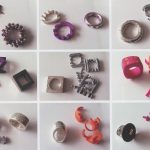
3D Printing and Jewelry Making
[Yael Friedman]
Categories: [3D & Sculpture] -

Articulated 3D-Printed, Hand-Painted Scu...
[Brian Chan]
Categories: [3D & Sculpture] -
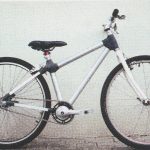
Bicycle Frame Domestic Fabrication
[Atar Brosh]
Categories: [3D & Sculpture] -
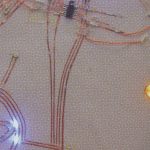
Dandelion Painting
[Jie Qi]
Categories: [2D & Wall-Hung] -
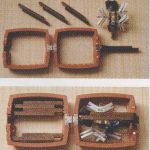
Folding Musical Instruments
[Brian Chan]
Categories: [3D & Sculpture] -

Line Number
[Jennifer Jacobs]
Categories: [2D & Wall-Hung] -
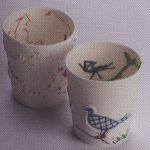
Minecrafting
[Katie Bunnell]
Categories: [3D & Sculpture] -
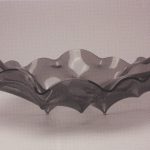
Neo-Industrial Biography
[Tavs Jorgensen]
Categories: [3D & Sculpture] -
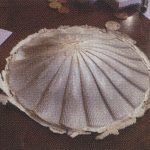
Piranesi Collection
[Factum Arte]
Categories: [3D & Sculpture] -

Random Generative Large Bowl
[Justin Marshall]
Categories: [2D & Wall-Hung] [Design] -

reAcoustics eGuitar
[Seppo O Valjakka]
Categories: [3D & Sculpture] -
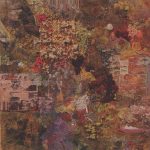
Species-Tool-Beings
[Shane Hope]
Categories: [2D & Wall-Hung] -
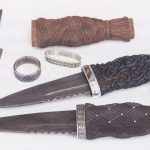
The Celtic Knife Design Using CNC Techni...
[Rab Gordon]
Categories: [3D & Sculpture] -
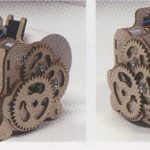
The Hunt for Butterflies
[Peter Schmitt]
Categories: [3D & Sculpture] -
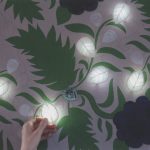
Wallpapers IV
[Leah Buechley]
Categories: [2D & Wall-Hung]
Exhibition Writings and Presentations:
-
Title:
Articulating Media Arts Activities in Art-Science Contexts
Author(s):
Category: Paper
Abstract Summary:
This paper discusses the conflicting expectations for media artists taking part in art-science collaborations. Despite the increasing opportunity to participate in these interdisciplinary projects, it can be unclear how media arts activities are best articulated, or even if they need to be defined at all. Additionally, this paper examines a methodological framework widely used in the visualization community for identifying different visualization tasks within research activities. Inspired by its success, this paper proposes a new methodological framework for media arts activities in art-science contexts. This framework splits media arts activities into overlapping areas: generation, augmentation, provocation and mediation, providing a useful way to articulate the broader importance of media arts in interdisciplinary collaboration.
Title: Ethics, Ecology, and the Future: Art and Design Face the Anthropocene
Author(s):
Category: Paper
Abstract Summary:
Art and design have become platforms for discussing the long-term implications of technology and modernity, most recently in relation to ecological crisis and the Anthropocene. While artists, designers and curators seek to raise awareness of the Anthropocene, it is important to remain critical of the narratives these practitioners develop. This paper provides a brief critique of how these issues are being addressed in the cultural sphere, suggesting that works of critical, conceptual and speculative design may be best suited to addressing the Anthropocene as they foster critical thinking about how we relate to technology and science, how we organize ourselves politically and socially, and how we define ourselves in the broader ecological assemblage. Artists and designers discussed include Marina Zurkow, Una Chaudhuri, Oliver Kellhammer, Fritz Ertl and Sarah Rothberg; Anthony Dunne and Fiona Raby; and Jae Rhim Lee.
Title: Light Pattern: Writing Code with Photographs
Author(s):
Category: Paper
Abstract Summary:
This paper explores the author’s Light Pattern project, a programming language where code is written with photographs rather than text. Light Pattern explores programming languages as the most direct conduit between human thinking and machine logic. It emphasizes the nuance, tone and personal style inherent in all code. It also creates an algorithmic photography structured by the programs one writes, but not ultimately computer-generated. The paper looks at connections to both hobbyist/hacker culture (specifically esolangs) and to art-historical impulses and movements such as Fluxus and Oulipo.
Title: The Bailey-Derek Grammar: Recording the Craft of Wire-Bending in the Trinidad Carnival
Author(s):
Category: Paper
Abstract Summary:
This paper presents work on the development of a shape grammar that records the dying, undocumented craft of wire-bending in the Trinidad Carnival. This craft is important for the building and continuation of cultural heritage and identity. Due to the lack of prior research in this non-Western design practice, the author conducted site visits, interviews and observations, and visually examined wire-bent artifacts in Trinidad to develop this grammar. This paper presents the materials, steps and shape rules that begin to synthesize the craft, as well as one design. This study and the resulting grammar have positive implications for design education and practice.
Title: The Dual Skins of a Media Façade: Explicit and Implicit Interactions
Author(s):
Category: Paper
Abstract Summary:
In the fall of 2013, Mégaphone, an architectural-scale interactive “Speakers’ Corner,” was deployed outdoors after dusk in downtown Montréal, Canada. This urban art installation included a monumental media façade designed to display a transcription of some of the words uttered into the microphone by end users. Driven by the system’s two temporal modalities—a performative “live mode” and an archival “sleep mode”—the video projections revealed the dual skins of a media façade that spanned almost an entire city block. This article examines how activists appropriated Mégaphone to transform an ordinary building into an urban mausoleum.
Title: Yturralde: Impossible Figure Generator
Author(s):
Category: Paper
Abstract Summary:
This research highlights José María Yturralde’s most significant involvement and contributions to early computer art from 1968 to 1973. Yturralde collaborated with artists and scientists to expand and redefine his understanding of shapes, and explored ways that the mainframe computer could be used as a tool for complementing his art practices. He is known for developing a mathematical model with which he was able to create a highly sophisticated program where Penrose geometries could be recombined algorithmically. However, there is limited evidence and access to the code of the actual software. The authors’ goal is to further understand Yturralde’s contribution by developing a re-significance of his model, which they have accomplished through a modern interpretation of manuscripts.




